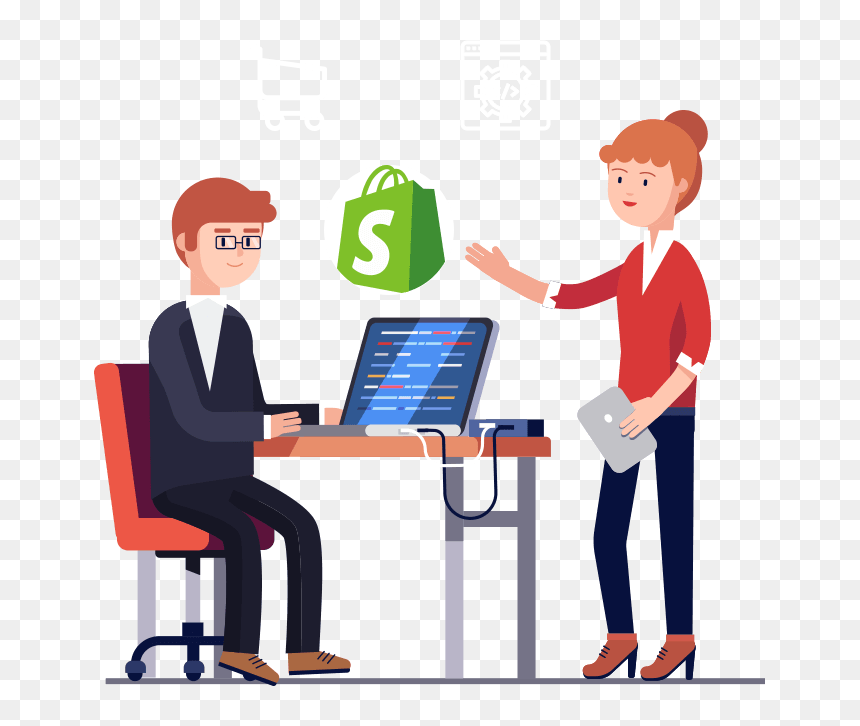Introduction
A skilled shopify developer can be the difference between an average storefront and a revenue-generating brand powerhouse. As consumer expectations, checkout tech, and search algorithms keep changing, merchants need specialized expertise to stay visible and profitable. In this guide, you’ll learn exactly which developer-led services matter most, why they matter in 2025, and how to put them to work—whether you’re launching from scratch or scaling to the next big milestone.
1. Why Shopify Still Reigns Supreme in 2025
-
Market dominance. Shopify now powers over 30 percent of global DTC brands, thanks to its robust app ecosystem and lightning-fast storefront performance.
-
Headless flexibility. Hydrogen and Oxygen (Shopify’s React-based stack) let devs create PWA-style experiences without losing native checkout speed.
-
AI-driven merchandising. Shopify Magic––its integrated AI suite––auto-generates product descriptions, optimizes images, and predicts inventory needs.
-
Global commerce tools. Duties, tax filing, multicurrency, and localized domains are managed natively.
Every advantage listed above still needs expert configuration. That’s where professional developers come in—coding bespoke logic, streamlining the tech stack, and weaving in brand storytelling.
2. Core Developer Services That Move the Needle
2.1 Theme Engineering & Performance Tuning
-
Custom Liquid sections for unique landing pages without bloated third-party apps.
-
Critical CSS extraction and lazy-loading for Largest Contentful Paint under 1.2 seconds.
-
Accessibility audits (WCAG 2.2) ensuring compliance and expanded audience reach.
2.2 Conversion-Focused App Integrations
-
Checkout Extensibility: one-click upsells, loyalty point redemption, and buy-again shortcuts baked directly into the native checkout.
-
Bundling engines: dynamic product kits that boost AOV by 18 percent on average.
-
Retention apps: Klaviyo/Attentive for segmented email & SMS flows, configured to trigger based on real-time storefront events.
2.3 Headless & Composable Builds
-
Hydrogen storefronts deployed on Oxygen, delivering sub-500 ms total blocking time.
-
GraphQL orchestrations that unify PIM, CMS, and OMS data into a single API layer.
-
Edge-delivered personalization utilizing contextual segments (geo, weather, past purchases) at runtime.
2.4 Automation & Back-Office Ops
-
Shopify Flow recipes for fraud checks, VIP routing, and low-stock alerts.
-
ERP integrations (Netsuite, Odoo, SAP) stitched together via webhooks for live inventory accuracy.
-
Automated VAT reporting mapped to regional rules, cutting finance hours by 40 percent monthly.
2.5 International & B2B Expansion
-
Markets Pro configuration for duties, taxes, and localized payment methods.
-
Wholesale channel setup with volume-tier pricing, net-terms, and quoting workflows.
-
Multi-origin shipping logic that selects closest warehouse for fastest delivery and lowest carbon footprint.
Each service layer compounds the previous ones—automation accelerates fulfillment, headless architecture speeds the front end, and intelligent localization unlocks new cultures and currencies.
3. Choosing the Right Developer Partner
Audit their storefront portfolio. Look for Core Web Vitals under Google’s “good” threshold and UX that feels on brand.
-
Verify Shopify certifications. Partners or Experts with a proven launch track record get priority support from Shopify itself.
-
Request a technical discovery call. A reputable dev will map current pain points to potential ROI, not simply quote hourly rates.
-
Assess project workflow. Agile sprints, transparent GitHub repos, and staging environments demonstrate mature processes.
-
Demand post-launch care. Ongoing maintenance retainer or SLA ensures issues are fixed before customers notice.
4. Case Study: From Hobby Store to Seven-Figure Brand
Brand: EcoGear, a sustainable outdoor accessories label.
-
Challenge: Slow theme (3.8 s LCP), 2 percent conversion rate, manual shipping labels.
-
Solution:
-
Theme rebuild created a modular design library; reduced CLS to 0.02.
-
Smart bundles raised AOV from $42 to $61.
-
Flow automation auto-printed labels and synced stock with their 3PL.
-
-
Results after 6 months:
-
38 percent jump in organic traffic (better page speed & structured data).
-
Conversion rate up to 3.9 percent.
-
$1.2 million annual run rate, hitting seven figures three quarters ahead of forecast.
-
5. Future-Proofing Your Store for 2026 and Beyond
On-device AI recommendations will personalize product feeds without hitting servers.
-
VR/AR product previews will move from novelty to necessity—WebXR APIs already live in Chrome on Android.
-
Sustainable commerce metrics (carbon labeling) will be built into checkouts, impacting conversion.
-
Token-gated commerce (Shopify’s native NFTs) will unlock membership revenue and community engagement.
A forward-thinking developer roadmap plugs each of these trends into your store before competitors pivot.
Conclusion
eCommerce winners in 2025 share three traits: lightning speed, frictionless buying journeys, and the agility to adopt new tech without downtime. Achieving all three hinges on specialized knowledge—exactly what a seasoned Shopify developer delivers.
From tailor-made themes and profit-boosting funnel tweaks to enterprise-grade integrations and international rollouts, developer-led enhancements add measurable value at every stage of the customer lifecycle. Stop chasing piecemeal fixes and start investing in comprehensive solutions that generate ROI month after month.
